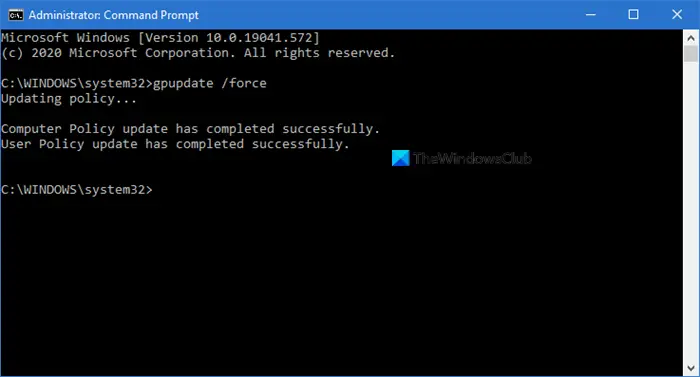How to force a Group Policy Update in Windows 11/10
By default Group Policy gets updated in the background every 90 minutes, after a change is recorded in the Active Object. But you can change the Group Policy Refresh Interval or refresh it manually. To run this tool, open an elevated Command Prompt, type the following, and hit Enter: To force apply only the changed policies, type or copy-paste the following command, and hit Enter:
How to run gpupdate /force on Windows 11/10
To force refresh or update all policies, run the command, and hit Enter: After this, you will see the following message: Updating Policy… User Policy update has completed successfully/Computer Policy update has completed successfully. This post will help you if GPUpdate Force is not working.
Force a Remote Group Policy Refresh
In Windows 11/10/8, you can remotely refresh Group Policy settings by using the Group Policy Management Console (GPMC). Alternatively, you can use the Invoke-GPUpdate Windows PowerShell cmdlet to refresh Group Policy for a set of computers. I hope you find this small tip useful.
How do I run Gpupdate force on Windows 11?
To run the gpupdate force on Windows 11, you need to use the admin permitted Command Prompt window. Search for cmd in the Taskbar search box, click on the Run as administrator option, and click the Yes button. Next, enter this command: gpupdate. If it doesn’t work, enter this command: gpupdate /force.
How do I force a Group Policy update remotely?
You can certainly force a Group Policy update remotely using the Invoke-GPUpdate command. In that case, you need to use PowerShell. Again, you need to open the elevated Windows PowerShell or Terminal. Following that, you can enter this command: Invoke-GPUpdate. TIP: This post will show you how to disable Group Policy Refresh while the computer is in use.

